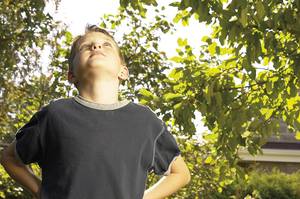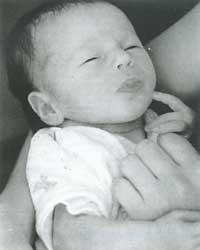Something good also in the worst
2013/06/10 Galarraga Aiestaran, Ana - Elhuyar Zientzia
Joakin Fuentes Biggi reminded me of the story. I referred to the weight of genetics and epigenetics in autism spectrum disorders for the main article to be published in the journal Elhuyar. Thus, after saying that epigenetics has great importance in autism, he told me when and how the influence of environmental factors on genes was demonstrated.
II. It was the end of the World War. The Allies succeeded in freeing the south of the Netherlands from the Nazis, but the Nazis managed to dominate an area and establish a food blockade. As a result, in that winter, the inhabitants suffered the biggest famine in the history of the country. He was called Hongerwinter, the winter of famine.
That famine caused thousands of deaths and children born to pregnant women at that time were smaller than enough. In addition, these children were followed up and at their maturity they had more health problems than the usual ones, such as hypertension, obesity, heart disease and psychiatric problems (schizophrenia, neuronal disorders...).
But the most surprising thing was that their children were also younger than the average at birth, and they later had the same diseases as their parents, although their consequences were slightly lower than those of their parents.
Hence, researchers concluded that certain factors in the environment directly influence genes. This is called epigenetics and changes in the genes are called epigenetic mutation. His children suffered, therefore, mutations in the genes by the state of the mothers and their environment. And their children inherited those changes.
It was a new idea and provoked a debate among scientists, but it has been ratified over time, and now there is no doubt that in genes it is not all written and that environmental factors also leave a mark. In fact, once the Dutch accounts were completed, Fuentes launched: “I’m sure that in the next generations the consequences of the stress and imbalance that we are living will be noticed.”
The case is that it was not the only contribution that the winter of hunger made to medicine. During the winter of famine, pediatrician Willen-Karel Dicke found that some hospitalized children improved significantly. And vice versa: they worsened when the war ended.
Dick already had the feeling that the diet was very much affecting his health. In fact, he had already done quite a few tests with food, and he had shown that banana benefited them, as well as the withdrawal of bread.
The breakfast season reaffirmed the suspicions that sick children could not eat bananas, bread or wheat flour. And, however, they were healthier than ever. Thus he realized that what was harmful was bread and flour. He continued to investigate and showed that children were harmed by a protein containing wheat and other cereals. They were celiac.
For all this, and despite its hardness, we must give the reason to the claim that the worst events also have a good end. It has at least two.

Gai honi buruzko eduki gehiago
Elhuyarrek garatutako teknologia






